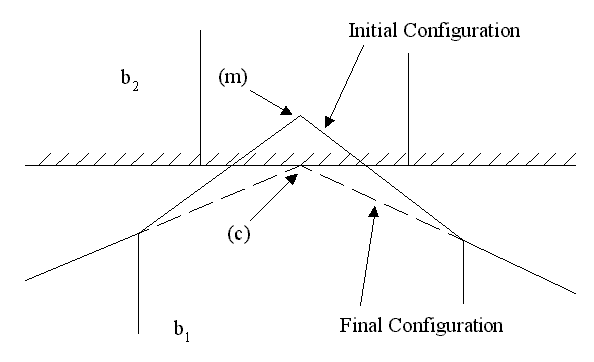User Area > Advice
Initial Slideline Penetration Check
The coordinates of all slideline contact nodes that are determined to
have penetrated prior to the commencement of the analysis are automatically changed
according to a perpendicular projection onto the opposing surface so that these nodes lie
identically on this opposing surface. This is typically caused on slideline surfaces that
are curved, the nodes of which may penetrate into the opposing flat segment approximating
the curve. Increased mesh density will reduce the degree of realignment. The following
message will be generated if this facility is triggered:
***WARNING*** CONTACT NODE (A) ON SURFACE
(B) OF SLIDELINE (C) HAS PENETRATED
IN THE INITIAL CONFIGURATION. THE NODE COORDINATES HAVE BEEN CHANGED
FROM: x1, y1,
z1
TO: x2, y2, z2 (SLCUPD PROCESSOR)
In LUSAS selecting Model properties> Attributes…
(invoking the LUSAS option number 186) provides a
switch to suppress this facility as required and is a useful method for simulating
interference fit problems. In this way the forces required for the interference fit will
come directly from the initial penetrations found by the slideline algorithms. If an
interference fit analysis is not being performed and this option is set, the forces
resulting from any initial penetrations may cause convergence difficulties if the
coordinate change is large.
Note that the resetting of coordinates is not available for tied
slidelines.
Suppressing this facility should preferably not be used while "de-bugging" a
data file since the suppression of the warning messages could remove some important
indicators to data file errors.
The diagram below shows a node (m) that is part of mesh b1 in initial
contact due to poor mesh discretisation which is subsequently set to position (c).

|